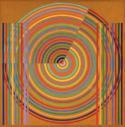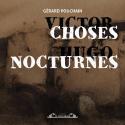Art Of The Day Weekly
#514 - from 10 May 2018 to 16 May 2018
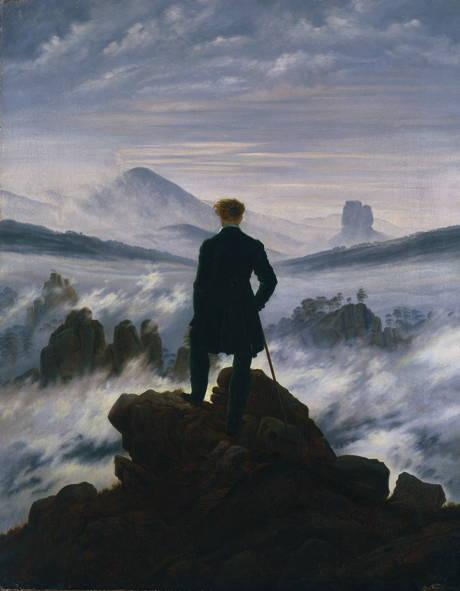
Caspar David Friedrich, Wanderer above the Sea of Fog, around 1817. Oil on canvas, 94.8 x 74.8 cm, Hamburger Kunsthalle © SHK / Hamburger Kunsthalle / bpk / Elke Walford.
IN THE AIR
Get away from it all…
BERLIN – To leave is to die a little –as the poet said. But it also means learning, discovering, exchanging. For some artists, writers, actors or painters, the desire “to see the world” is an irrepressible momentum. Chow was it transcribed in the 19th century? This is the theme of this exhibition, which draws from a wide selection of European artists, showing it was a shared impulse. We see Friedrich – who produced a certain number of icons on the subject, among them these lonely men in front of a sea of ice or of clouds – or Renoir – a simple country road winding between poppies can take you far. Vagrancy has a special meaning when on foot, and all these minstrels of the past have a cane, a pick, a bag, good shoes to help them go forward: Willumsen the Dane, Kramskoy the Russian, Hodler the Swiss, etc. This taste for wandering and the direct contact with Nature already implied a slowing down of the rhythms – a matter that remains of interest today, and is embodied in particular in the calls for a turn down of growth.
• Wanderlust at the Alte Nationalgalerie, from 10 May to 16 September 2018.
EXHIBITIONS
Sempere now and always
MADRID – He died a third of a century ago, but time has come to reevaluate the itinerary of Eusebio Sempere (1923-1985). The importance of his participation in the young Ibero-American kinetic art movement (particularly impulsed by the galerie Denise René in Paris) is reduced by his somewhat counter current itinerary: though he lived in Paris in the fifties, he returned to Spain in 1960 and developed his art in the semi-consciousness that reigned in Spain under Franco’s dictatorship. He survived by fleeing, once by a trip to the USA in 1964, which allowed him to meet Josef Albers, or by being very active in the movements that always functioned at the limits of censorship. The exhibition presents more than 150 works from 1949 to 1981 – gouaches, reliefs, mobiles, compositions in cardboard, wood, or chrome metal pipes – and sometime feels like a definite retrospective.
• Eusebio Sempere at the Museo Reina Sofía, from 9 May to 17 September 2018.
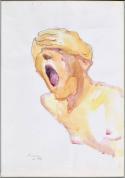
Maria Lassnig, Untitled, pencil and watercolour, 1986, 62,7 x 43,8 cm. Photo et © Maria Lassnig Stiftung
Lassnig, by herself
BASEL – A contemporary and with practically the same longevity as Louise Bourgeois (1911-2010), Austrian artist Maria Lassnig (1919-2014) is among the great ladies of 20th century art. She had a preference for drawings on paper, and created a corpus that was disturbing for her time: often in the nude – at the table, in bed, in the water or on a motorcycle – she used her own body as a basic material and led a long introspection over various decades, a sort of “mental” rather than physical portrait. She had a long career, during which she flirted at the beginning with abstraction and tachism, spent time with André Breton as well as with Arnulf Rainer, and recognition came late in his career, with a Lion d’or at the Biennale of Venice in 2013. The 90 works begin here with the first self-portraits from the 1940s and end with the same motifs, half a century later, showing a remarkable steadfastness.
• Maria Lassnig at the Kunstmuseum, from 12 May to 26 August 2018.
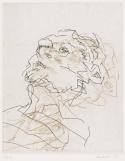
Frank Auerbach, Julia, 1998. Etching and aquatint from two plates in black over gold, 258 × 203 mm (plate). Private collection, Cologne. Photo: Städel Museum © Frank Auerbach, courtesy Marlborough Fine Art.
Auerbach/Freud, intertwined portraits
FRANKFURT – Frank Auerbach (born in 1931) is one of the last survivors among the giants of British art of the 20th century. It is a good idea to present it in the company of his contemporary Lucian Freud (1922-2011), both natives from the German Jewish community who sought refuge in London against barbarism. The reputation of the latter gave the former the echo he deserves. And the link is legitimate: Freud and Auerbach met in 1956, appreciated one another throughout their lives, and worked obsessively the theme of the portrait, which gives the guiding thread of the exhibition.
• Frank Auerbach & Lucian Freud at the Städel Museum, from 16 May to 12 August 2018.
The V&A looks towards the future
LONDON – The Victoria & Albert is prospecting. It remains loyal to a certain experimental approach, bringing together some one hundred objects that must change - be it revolutionize - our way of living. While design is the angle mentioned– something that easily bends to one’s wishes – objects flying all over the place, from the CubeSat low cost satellite to the 3D zero gravity printer all the way to the these glass memory disks, perfected by the university of Southampton and which can survive for billions of years: probably more than necessary…
• The Future Starts Here at the Victoria & Albert Museum, from 12 May to 4 November 2018.
BOOKS
Victor Hugo: long live the paranormal
The text is accompanied here by a selection of his ink drawings - a universe we would undoubtedly qualify as being dreamlike, hallucinated, mysterious – and takes its sense. Indeed, the author traced back in the Romantic writer’s oversized corpus all the mentions, day after day, in his experiments with unexplained phenomena. “Unique sounds”. “At dawn, a woman’s voice said loudly in my room: Me”. “Napoleon razor rusty and stained with soap”. “A thump was heard twice over my head”, “As of five in the morning, soft, rapid thumps all over my room and all the way over to me”. These words, written between 1827 and 1885, define a very sensitive and anguished person, far from the calm and rational colossus with the white beard. Would he have taken a break, during his agony, with one last alexandrine – “Is this where the combat between day and night takes place”?
• Victor Hugo, choses nocturnes, by Gérard Pouchain, Le Vistemboir publishing house, 2018, 304 p., €28.
OPENINGS OF THE WEEK

INK#3
10 May 2018 - MARSEILLE - Studio Fotokino
During Marseille Contemporary Art Spring, a focus on alternative art publishing

